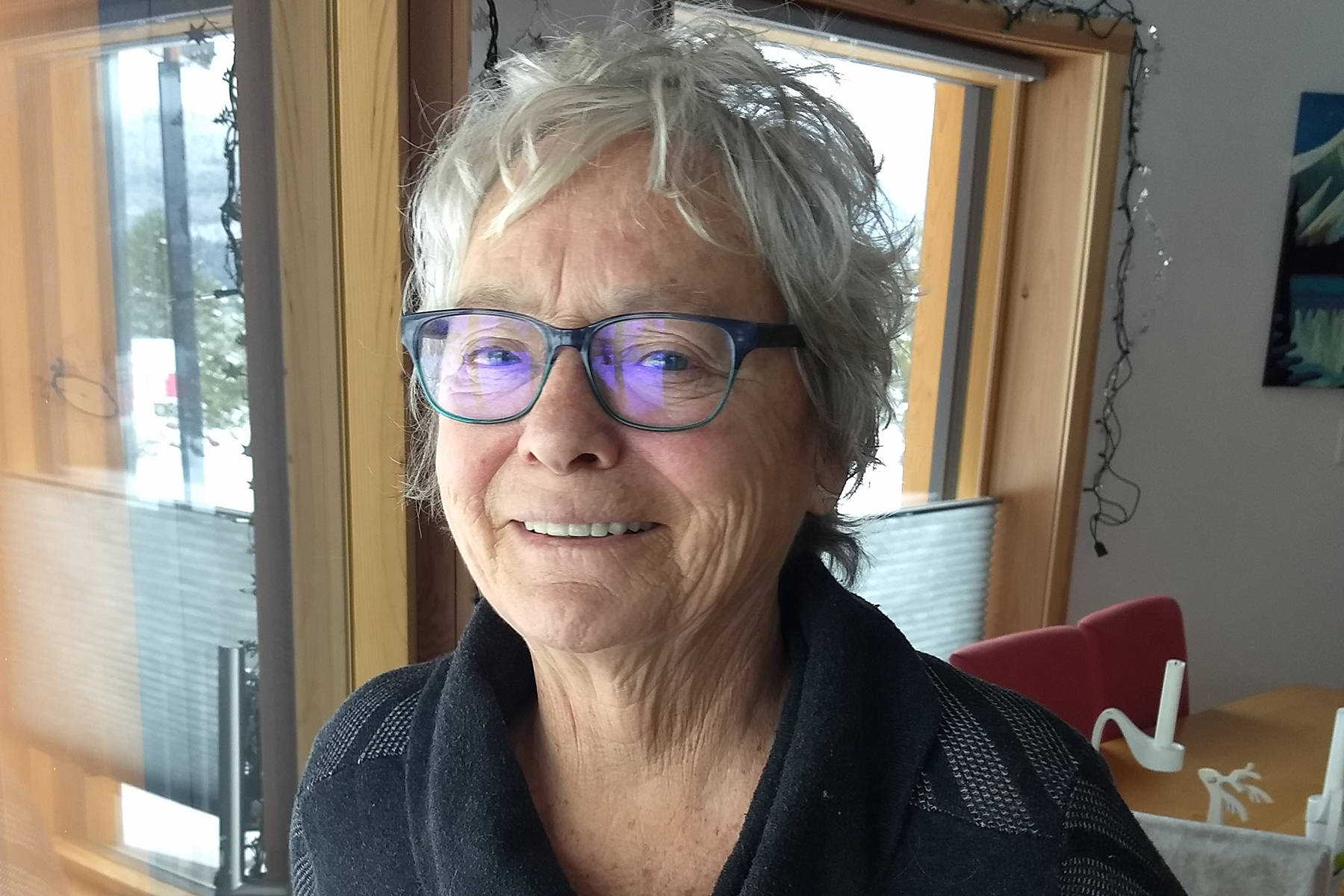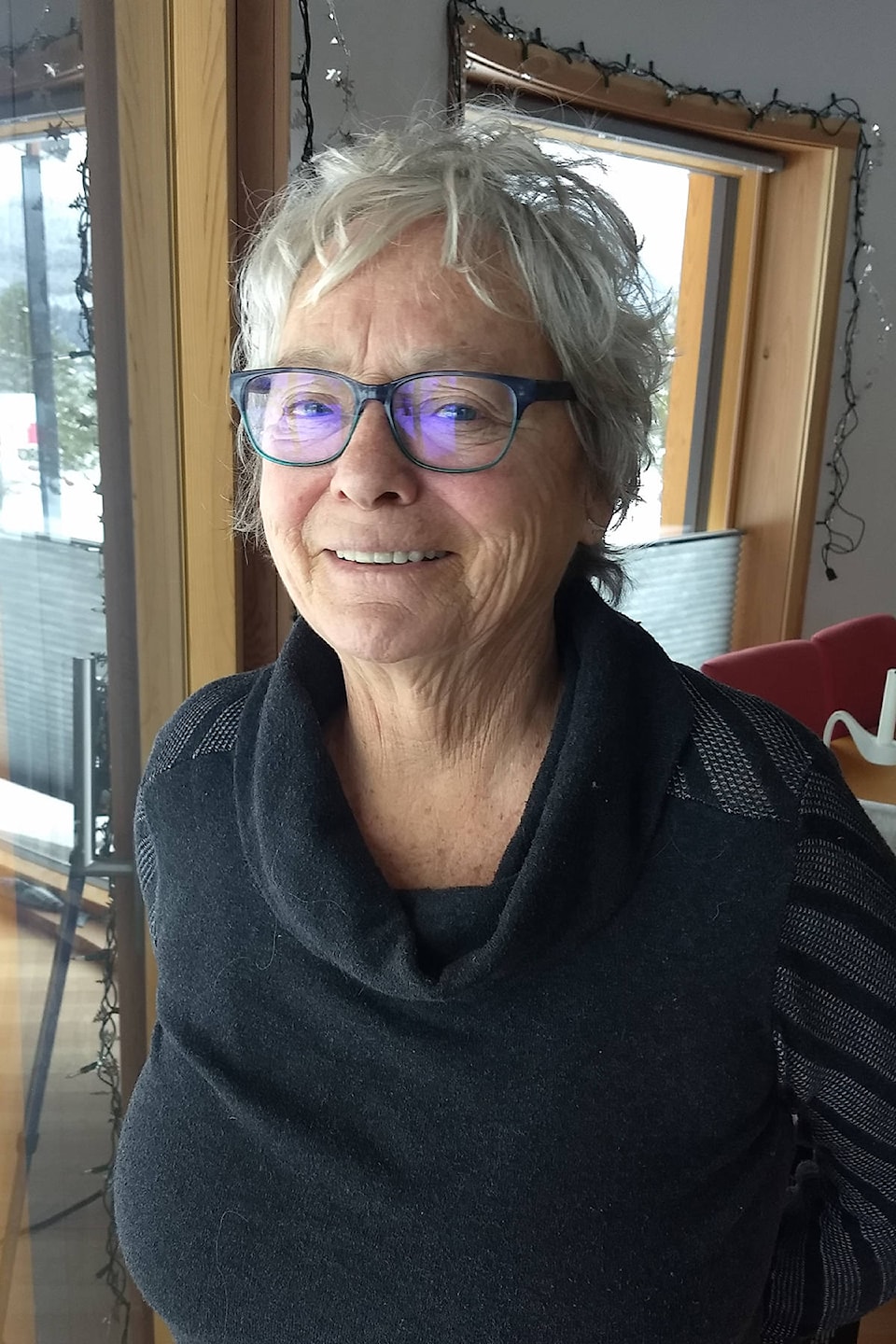We asked our last Notable Neighbour, Rod McGillis, to nominate the next person to chat with us. He chose Molly Bell.
“Put your foot there,” Molly Bell says to me, pointing to a stool by the door. I dutifully comply.
She pulls the sloppy bow apart on my shoe, takes the laces, and re-forms the tie.
“If you wrap the lace around the loop twice, then tighten it, it makes a bow that won’t fall apart, but can be untied by pulling one lace,” she says, demonstrating.
“You see, you’re never too old to learn something.”
That might be a mantra for Bell’s life. Now in her 70s, when many seniors are settling back watching Jeopardy on TV, she’s been learning the intricacies of condominium development, as she builds a three-unit multiplex on the village waterfront.
The striking buildings incorporate the latest passive-energy heating systems, triple-pane window and door systems imported from Europe, and hand-made stairs and fixtures, all using local craftsmen. As John Hammond says in Jurassic Park, no expense has been spared in the development.
“I’m very proud of it. I see it as an installation, it is as much art as a building - it’s an artistic statement,” she said. “Does that sound high-falutin’?
“But it shows what you can build using local materials. You can build something that is energy efficient, and that is what we should do that in this climate.”
“Besides,” she says, “I hate giving BC Hydro any money.”
But the project’s not been without its costs, physically and mentally, on Bell. A year or so ago she fell on the construction site, suffering a broken hip. She spent several months in a wheelchair, and still walks with a stiff gait.
While it’s been demanding, you don’t get the sense Bell regrets launching into such a big project in her retirement years.
“I’ll be seventy-something soon,” she says. “This project has taken a lot out of me. It’s way bigger than I thought it was going to be, which is the nature of projects.
“But you have to do something. Designing it, seeing it come to life, it’s pretty satisfying.”
“Otherwise I’d be just another retired person, doing whatever.”
And that follows a pattern in Bell’s life - going to a community, jumping in feet-first on a big project and getting involved.
“I just am a restless creature, always looking for trouble,” she jokes.
Growing up in Toronto, the oldest of five siblings, Bell was very much part of the hippy, back-to-the-land generation. She moved with her husband (‘was-band’, she jokingly describes him now) to Summerside, PEI to homestead. There the couple started a fish farm.
“It was a new concept- we were zoned as light industrial by the local government, and we never did get a farming licence,” she recalls.
While there, Bell saw a need. The tight-knit, conservative town (with 13 churches, she says) had both an armed forces base and an Acadian community nearby. But isolation, alcoholism, domestic violence and other social needs plagued the community. Bell helped start a women’s centre there.
“We provided information about legal issues and sexual assault, information about wills, banking, and education,” she says. “And the centre is still going, unfortunately.
“I say ‘unfortunately’ because I don’t think we should need women’s centres. But of course we do.”
Bell says when the centre was started, locals were very suspicious. She recalls a chance meeting a few years later.
“One night I was in a bar, and a girl in the bar said ‘you’re Molly Bell? Your name used to come up at our dinner table.’
”She was from PEI. Her mom was the head of the Catholic Women’s League, and they were terrified of the women’s center. We were going to break up families, and burn bras on Main Street.”
“But we got women together who didn’t have the opportunity. It was pretty revolutionary.”
Bell and her husband eventually moved to Nova Scotia, and when the marriage ended, she moved out west, to Canmore. Her son had moved there, training with the Canadian biathlon team in the Alberta community.
It didn’t take long for Bell to get involved again. This time the fight was for the environment, to halt the encroachment of golf courses on natural wildlife corridors.
“We planned interventions, sponsored petitions, wrote letters,” she recalled. “I can’t say we were totally successful, but we might have made a bit of a difference.”
But Canmore didn’t appeal to her (“Everyone is in spandex, from head to toe, even the babies”) so she moved further west, to Salmon Arm.
Trouble didn’t take long to find her there either.
“I got involved right away with a group fighting the Walmart that was going to build on the last remaining wetland between Quesnel and Penticton for migrating birds,” she says.
Walmart eventually won that fight. But Bell began another passion there - building her dream home. Fed up with houses poorly designed and insulated for Canadian winters, she used an inheritance windfall to build “a green and beautiful home”.
“It had a big garden, and a big cement fence because it was downtown,” she recalls. “I wanted to be downtown where I could walk everywhere.”
But after six years, as she got older, the house became too big for her, the garden too much work.
“So I looked at it as an installation piece. I designed it, had it built, but I didn’t want to stay there the rest of my life.”
Selling the house, Bell headed to Nakusp. She had visited the area often in the past, as many friends from Canmore had moved here over the years.
She bought some property near Crescent Bay, but wanted to move downtown.
And there, she found a home. Or more accurately, built another one to her standards.
“I just got to the point where, trying to buy a house, it was either a tear-down or a four-bedroom rancher with a two-acre yard,” she says. “Then this property came up on the waterfront.”
It didn’t start out as such a massive project. But zoning regulations forced a multi-family construction, and multi-family construction these days is highly regulated. Her dream home on the lakeshore has turned into a project with architects, lawyers, and several kinds of engineers, all working to meet the demands of an eight-inch thick building-code book, while achieving her particular vision of a cutting-edge, environmentally-friendly home.
“Once you take on project like this, it takes on a life of its own,” she says. “I figured, I’ve been lucky, I didn’t have that money before, so I am going to do something really exciting with it.”
The project has pretty much consumed Bell for the last two years, taking her away from local activism - this time, on getting citizens involved in the Columbia Basin Treaty renegotiation. With health problems taking some of her energy, she’s not sure what she’ll do with her time after this project is completed, sometime this year.
“I’m not planning on taking on anything just yet, not until I finish here and get my body back,” she says.
But Nakusp is her home now. She enjoys hanging out with friends, young and old; volunteering at Sufferfest, participating in the reading club, and the re-shelving crew at the library, and all the other activities the village offers.
“I love Nakusp. Because it is such a small place, people really have to get along,” she says. “You can’t be giving people the finger on the corner, because you’ll be seeing them later in Overwaitea.
“It’s almost a spiritual exercise to live in Nakusp, because you have to watch what you say and be careful what you think. I think it is a wonderful experiment in human living.”
“I’m very grateful to be here, be part of community, and hope I can contribute more in the future.”

